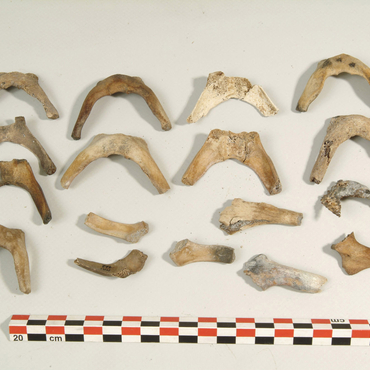
- Home
- Life aboard ship
- Meals
- Pork tongues aboard the Dauphine
At the fore of the ship, close to what has been identified as the kitchen, several hyoid bones of both pigs and cows were discovered in an small area. This attests to the existence of preserved tongue among the ship's supplies.
Although tongue is not part of the provisions stipulated in the 1689 Edict, one can find it in the archives and inventories of ships from Saint-Malo. Thus, the 1746 inventory of the Intrépide, a privateer ship from Saint-Malo, lists three barrels of tongues. The presence of the tongues is somewhat more surprising aboard a royal frigate from Le Havre, where one would expects to find more strict adherence to the rules. However, there is a difference between theory and practice, and the food served aboard ship was often quite different from what the royal administration dictated. Neither the privateer nor the king's frigate seems to have complied with the stipulation in the 1689 Edict that meat be served "with neither feet nor heads" - excavations revealed the presence of hoof bones and pig skulls aboard both wrecks.
In counterpoint to the official sources, archaeozoological analysis of the animal remains found on the wrecks provides tangibles evidence of the dietary practices and of the type of meat found aboard ships, areas for which written sources are unfortunately silent.


